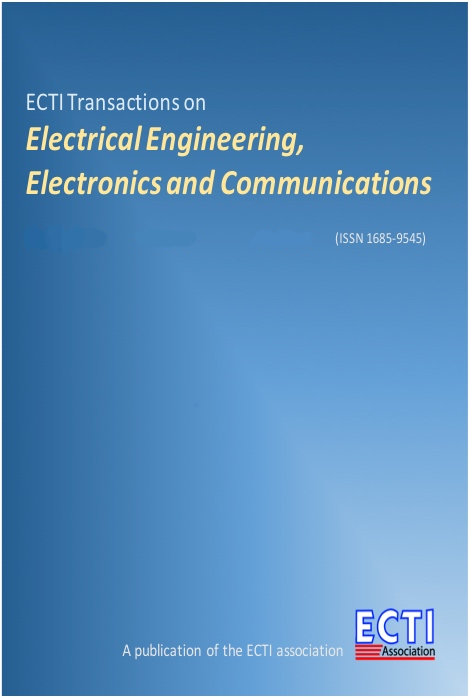Utilization of MIMO Concept for Optical Communication System under Fog Condition
Main Article Content
Abstract
Free-space optical (FSO) communication consider license free, high data rate, wide bandwidth and cost-effective. Multi-input Multi-output (MIMO) systems can be employed to reduce the attenuation by heavy fog and improve FSO channel capacity. In this paper a single-input single-output and multi–input multi-output examined to investigate the performance of these systems under heavy fog. A comparison is made in terms of received optical power, signal to noise ratio, and bit error rate (BER) using OptiSystem version 7.0. The signal reaches to link up to 1.7km, 1.55km, 1.5km, and 1.4km for 4Tx/4Rx, 3Tx/3Rx, 2Tx/2Rx, 1Tx/1Rxrespectively. The results showed that the quality of received power is enhancement by using up to four beams.
Article Details
This journal provides immediate open access to its content on the principle that making research freely available to the public supports a greater global exchange of knowledge.
- Creative Commons Copyright License
The journal allows readers to download and share all published articles as long as they properly cite such articles; however, they cannot change them or use them commercially. This is classified as CC BY-NC-ND for the creative commons license.
- Retention of Copyright and Publishing Rights
The journal allows the authors of the published articles to hold copyrights and publishing rights without restrictions.
References
[2] Martin Grabner, Vaclav Kvicera,” Experimental Study of Atmospheric Visibility and Optical Wave Attenuation for Free space optics communication”, Czech Science Foundation project No. 102/08/0851.
[3] Willebrand H A, Ghuman B S. Fiber optic Without Fiber. Spectrum, 38(8): 40–45, IEEE; 2001.
[4] P. Goetz, W. Rabinovich, R. Mahon, J. Murphy, M. Ferraro, M. Suite, W. Smith, B. Xu, H. Burris, C. Moore, W. Schultz, B. Mathieu, W. Freeman, S. Frawley, M. Colbert, and K. Reese, \Modulating retro-rector laser communication systems at the naval research laboratory," in Proceedings of Military Communications Conference (MILCOM' 10), Oct. 2010, pp. 1601{1606}.
[5] N. Nor, I. Raqul, W. Al-Khateeb, and S. Zabidi, Environmental effects on free space earth-to-satellite optical link based on measurement data in Malaysia," in Proceedings of International Conference on Computer and Communication Engineering (ICCCE' 12), Jul. 2012, pp. 694{699.
[6] S. Zabidi, W. Al-Khateeb, M. Islam, and W. Naji, The effect of weather on free space optics communication (FSO) under tropical weather conditions and 189 a proposed setup for measurement," in Proceedings of International Conference on Computer and Communication Engineering (ICCCE' 10), May 2010, pp. 1{5}.
[7] W. O. Popoola and Z. Ghassemlooy, "BPSK subcarrier intensity modulated free space optical communications in atmospheric turbulence," Journal of Lightwave Technology, vol. 27, pp. 967-973,
2009.
[8] I. I. Kim, and E.Korevaar, Availability of Free Space Optics (FSO) and Hybrid FSO/RF Systems, Optical Access, Incorporated; 2002.
[9] Farouk kh. Shakir, Mazin Ali A. Ali, Multi-Beam Free-Space Optical Link to Mitigation of Rain Attenuation, journal of optical communications, in press.
[10] Salah A. Adnan, Mazin Ali A. Ali, Sarah, Characteristics of RF signal in Free Space Optics (RoFSO) considering Rain Effect, journal of engineering and applied sciences, vol. 13, pp. 1644-1648, 2018
[11] S. M. Navidpour, M. Uysal, and M. Kavehrad, “BER performance of free-space optical transmission with spatial diversity," IEEE Trans. Wireless Commun., vol. 6, no. 8, pp. 2813-2819, Aug. 2007.
[12] Marvi .G , Preeti .S , Pardeep .K "Multibeam WDM-FSO System: An Optimum Solution for Clear and Hazy Weather Conditions" Wireless Pers Commun DOI 10.1007/s11277-017-4810-2 ,2017.
[13] S.V. Kartalopoulos, "Free Space Optical Networks for Ultra-Broad Services", Wiley, USA, 2011.
[14] Killinger K. D., Churnside J. H. and Rothman L. S., “Atmospheric Optics”, Chap. 44 in OSA Handbook of Optics, pp. 44.1 – 44.50, OSA, 1995.
[15] Shettle E. P., “Models of Aerosols, Clouds, and Precipitation for Atmospheric Propagation Studies”, in Atmospheric Propagation in the UV, Visible, IR, and MM Wave Region and Related Systems Aspects, AGARD Conf. Proc. 454(15), 1–13, 1989.
[16] Kim I. I., McArthur B. and Korevaar E., “Comparison of Laser Beam Propagation at 785 nm and 1550 nm in Fog and Haze for Optical Wireless Communications,’’ Proc. SPIE 4214, 26–37, 2001.
[17] P. W. Kruse and al., Elements of infrared technology: Generation, transmission and Detection, J. Wiley and Sons, New York (1962).
[18] S. Bloom, E. Korevaar, J. Schuster, H. Willebrand, 'Understanding the performance of free-space optics', Journal of Optical Networking. Vol. 2, No. 6, pp. 178-200, June 2003.
[19] A. K. Majumda, J. C. Ricklin, Free-space laser communications principles and advances. USA: Springer; 2008.
[20]. S. Ishii, S. Sayama, et al., Rain Attenuation at Terahertz, Wireless Eng Technol. 2010;1:92–95.
[21] N. Garg, S. Kumar, Design of free space optical communication link with Mach-Zehnder optical modulator for long distance, IEEE – 31661 4th ICCCNT July 4–6, 2013, Tiruchengode, India.


